6 Yoga Poses to Prevent and Relieve Migraines and Exercise-Induced Headaches
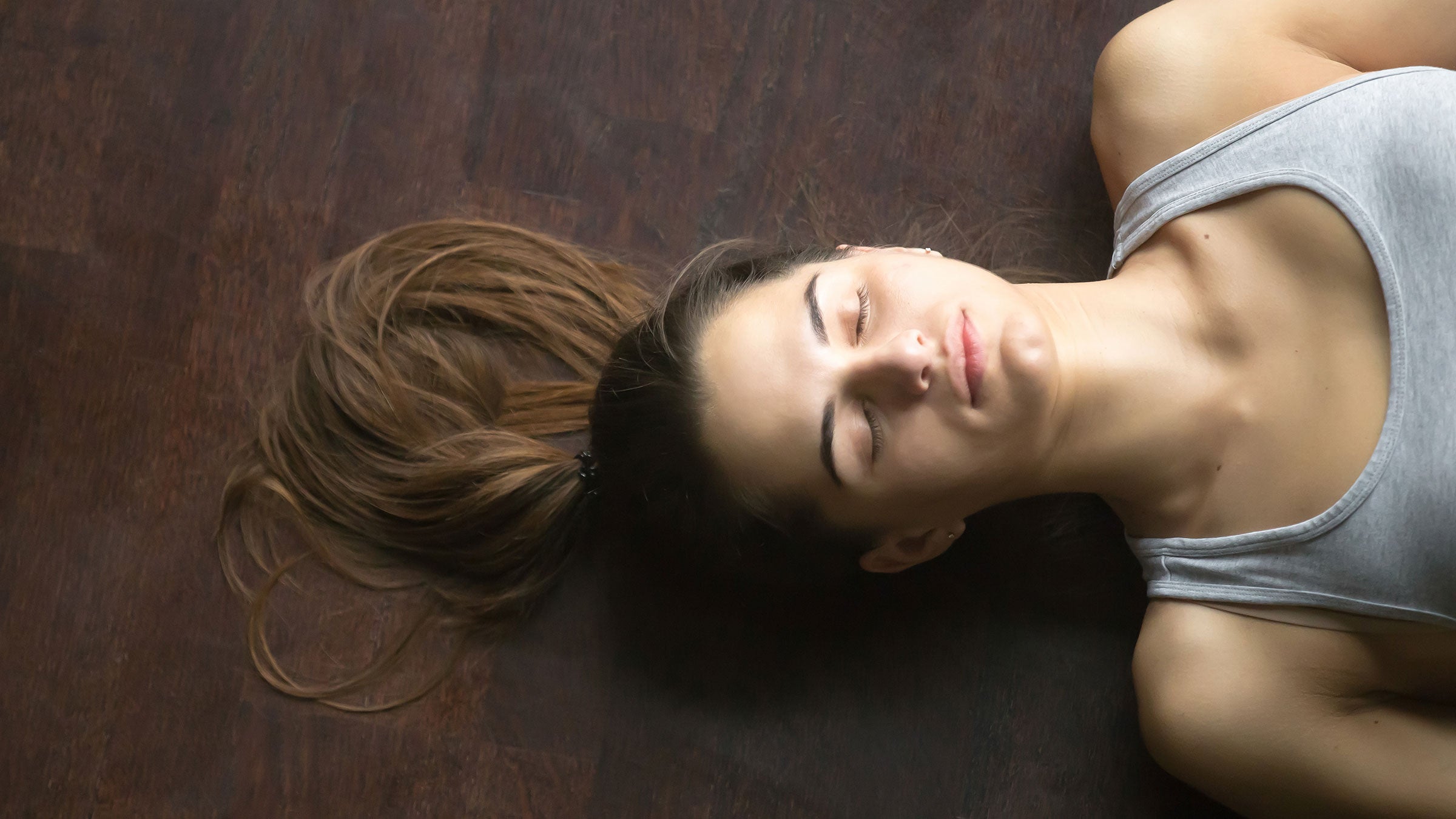
(Photo: Getty Images)
If you are among the 88 percent of people in the United States who do not suffer from migraines, consider yourself lucky. For the other 12 percent of us, migraines can be debilitating (if you know, you know). If you’re an endurance athlete, your odds of experiencing migraines are even higher – exercise-induced headaches, which come on after strenuous activities like running, are a real thing. If you’re prone to having migraines, you also have a higher risk of getting exercise headaches.
There are several medications and treatments available for migraines, but there are also natural ways to help. Yoga can not only aid in the recovery from migraines, but also prevent them from occurring in the first place.
How can yoga help migraines and exercise-induced headaches?
Yoga is great for reducing stress, a major cause of migraines and headaches in general. This is particularly true for endurance athletes, who experience physical stress (in the form of training) and life stress (like trying to juggle work, family, social obligations, and training). Yoga helps with this by relaxing your entire parasympathetic system, slowing your heart rate and lowering your blood pressure. This helps your body to recover after a migraine attack. Studies have even shown that a regular yoga practice can reduce the frequency and intensity of migraines. It can also help you sleep better – which is critical for recovering from hard workouts and preventing new migraines from occurring.
RELATED: 15 Yoga Poses to Help You Sleep Better
Whether you’ve already talked to your doctor about migraine relief or you are looking for some other ideas to ease the pain, roll out your yoga mat and give these poses a try.
Yoga poses to practice during a migraine or exercise-induced headache
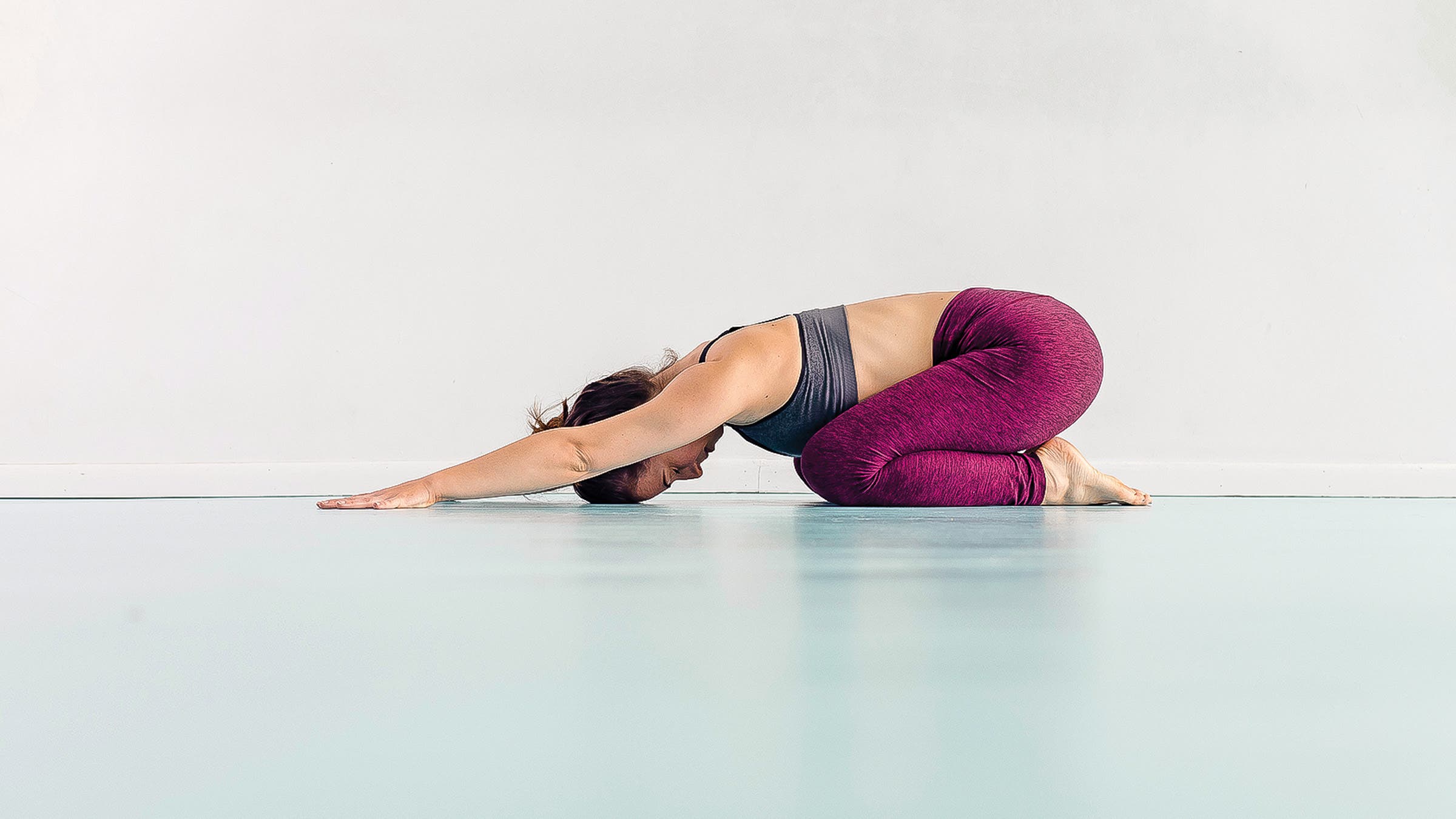
Balasana (Child’s Pose)
Why this yoga pose helps with migraines: Child’s Pose is very calming to your system and can reduce pain. This pose can also help if that pressure on your forehead feels good or relieves pain. (Tip: Rest your forehead on an ice pack on the ground to help numb the pain in your head!)
How to: Kneel on the floor. Touch your big toes together and sit on your heels, then separate your knees about as wide as your hips. Exhale and lay your torso down between your thighs.
Broaden your sacrum across the back of your pelvis and narrow your hip points toward the navel, so that they nestle down onto the inner thighs. Lengthen your tailbone away from the back of the pelvis while you lift the base of your skull away from the back of your neck. Rest your forehead on the mat.
Stretch your arms forward with your palms down and fingers spread wide. Rest here for anywhere from a few breaths to a few minutes.
RELATED: 5 Reasons Why Yoga is Good for Athletes
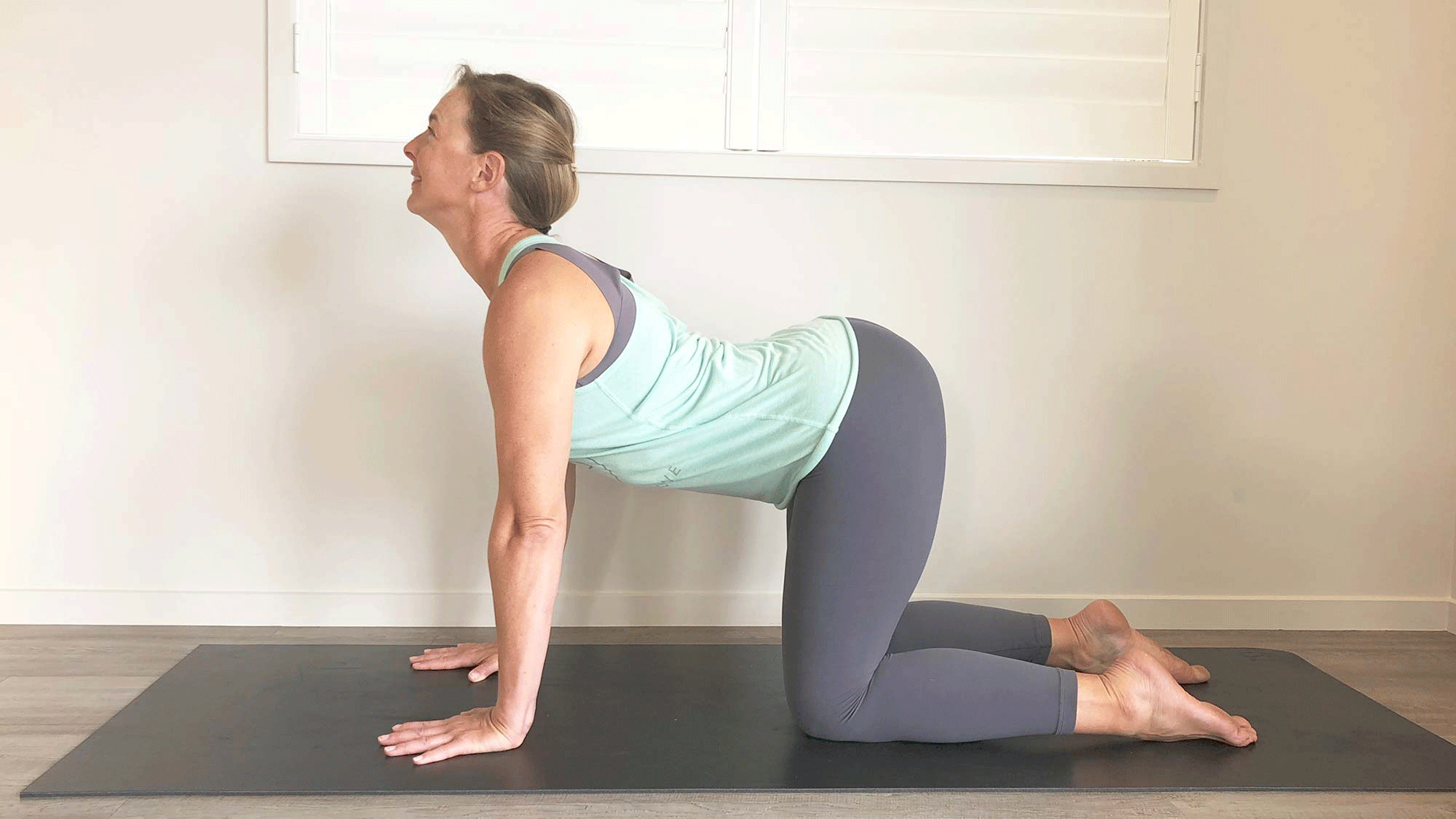
Marjariasana / Bitilasana (Cat-Cow Pose)
Why this yoga pose helps with migraines: Cat-Cow improves your circulation, stretches your neck and spine, and is very calming to both the mind and body.
How to: Start on your hands and knees in Tabletop position. Make sure your knees are set directly below your hips and your wrists, elbows, and shoulders are in line and perpendicular to the floor. Center your head in a neutral position, eyes looking at the floor.
As you inhale, lift your sitting bones and chest toward the ceiling, allowing your belly to sink toward the floor. Lift your head to look straight forward. As you exhale, round your spine toward the ceiling, making sure to keep your shoulders and knees in position. Release your head toward the floor, but don’t force your chin to your chest.
Repeat as many times as needed, following your natural inhale and exhale.
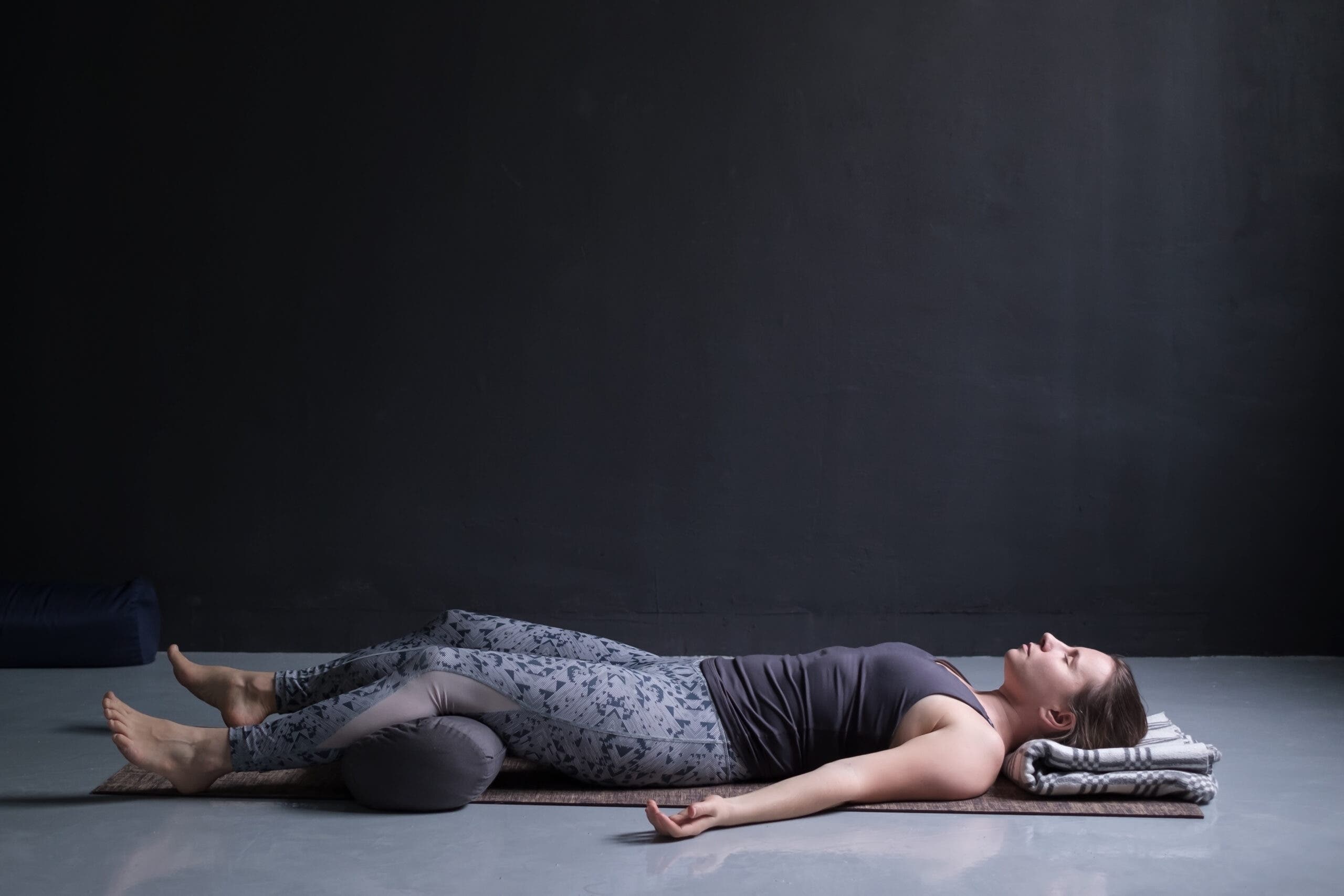
Savasana (Corpse Pose)
Why this yoga pose helps with migraines: When a migraine hits and all you want to do is lay still in a dark room, Corpse Pose can help you relax into a meditative state, or at the very least, allow your mind to rest and find some relief from the pain.
How to: If possible, ask a partner to align your head to get the most benefit from Corpse Pose. Ask them to gently cradle your head in their hands and draw the base of your skull away from the back of the neck, lengthening the shorter side of the neck, so that both ears are equidistant from the shoulders. Then, ask your partner to lay your head back down on the floor, making sure that the tip of your nose is pointing directly toward the ceiling. If you’re alone, use your hands to lift the base of your skull away from the back of your neck before releasing it back to the floor. If you have any difficulty doing this, support the back of your head and neck on a folded blanket.
In Savasana, it’s essential that your body be in a neutral position. Lie on the floor and release both legs, softening your groin, and see that your legs and feet are angled evenly. Narrow your front pelvis and soften (but don’t flatten) your lower back. Reach your arms toward the ceiling and rock slightly from side to side, broadening your back ribs and your shoulder blades. Then release your arms to the floor. Rest the backs of your hands on the floor. Breathe.
Yoga poses to help prevent a migraine attack
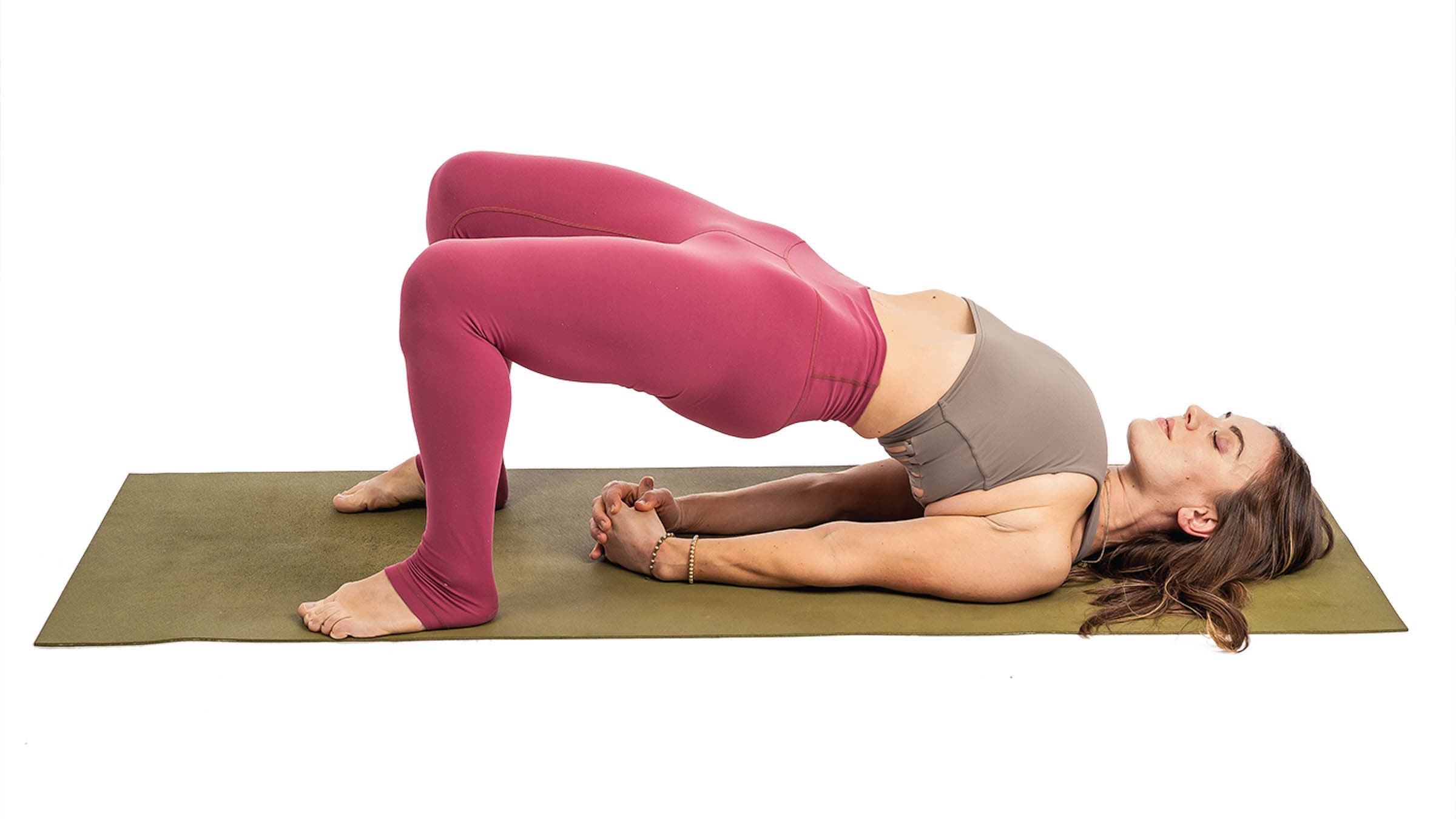
Setu Bandha Sarvangasana (Bridge Pose)
Why this yoga pose helps prevent migraines: Bridge Pose helps release tension in your upper body. In this pose, you also increase the blood supply to your brain by lifting your heart above your head.
How to: Lie supine on the floor, and if necessary, place a thickly folded blanket under your shoulders to protect your neck. Bend your knees and set your feet on the floor, heels as close to the sitting bones as possible. Exhale and, pressing your inner feet and arms actively into the floor, lift the buttocks off the floor. Keep your thighs and inner feet parallel. Clasp the hands below your pelvis and extend through the arms to help you stay on the tops of your shoulders. Lift your chin slightly away from your sternum and press the top of your sternum toward the chin.
Stay in the pose anywhere from 30 seconds to 1 minute. Release with an exhalation, rolling your spine slowly down onto the floor.
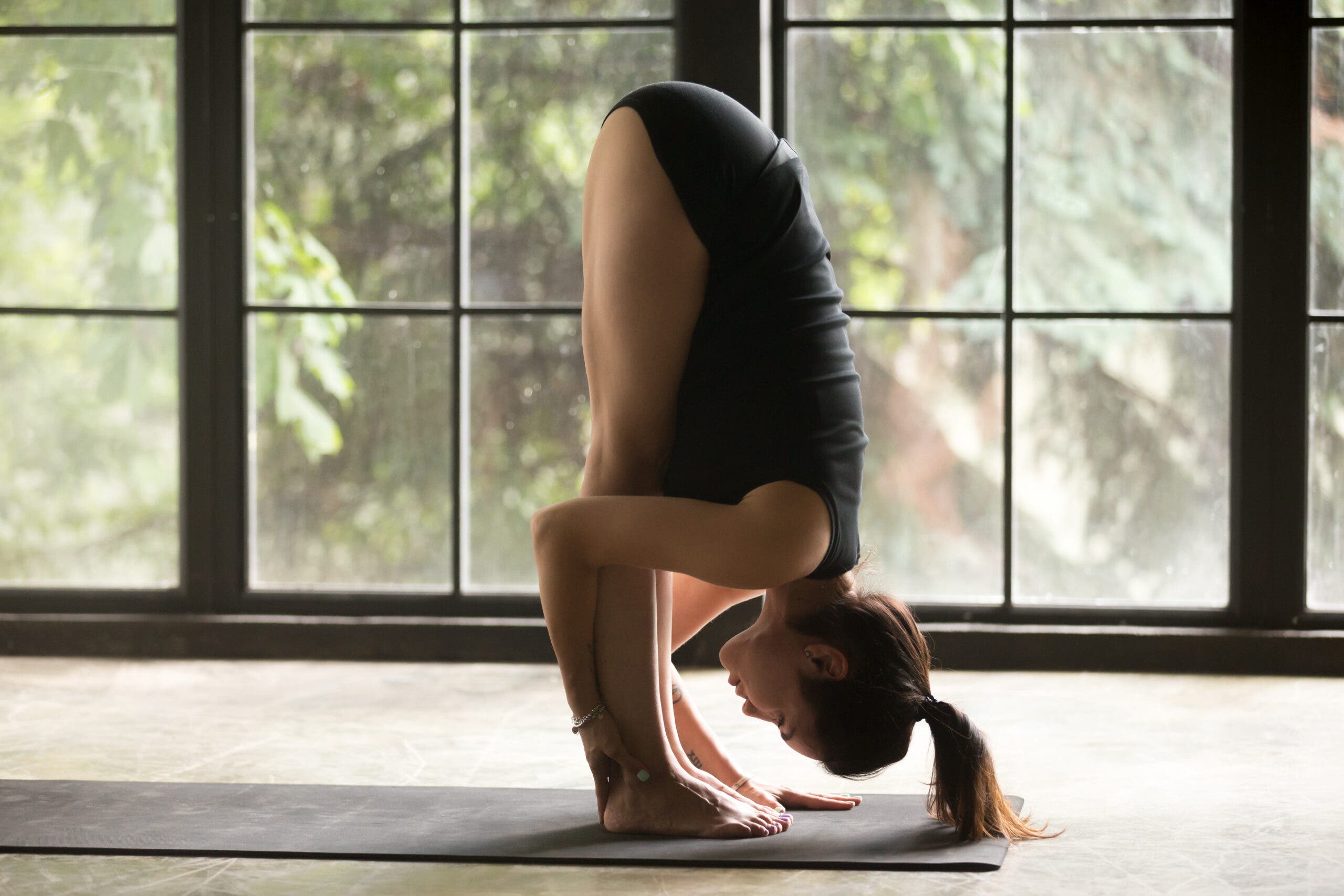
Uttanasana (Standing Forward Bend)
Why this yoga pose helps prevent migraines: Standing Forward Bend relieves stress and improves your circulation, which can help regulate your hormones.
How to: Start in Tadasana, hands on your hips. Exhale and bend forward at your hips, not your waist, to lengthen the front torso.
If possible, with your knees straight, bring your palms or fingertips to the floor slightly in front of or beside your feet, or bring your palms to the backs of your ankles. If this isn’t possible, cross your forearms and hold your elbows. Press the heels firmly into the floor and lift the sitting bones toward the ceiling.
With each inhale, lift your body slightly. With each exhale, release into the pose a little more. Let your head hang from the root of the neck, which is deep in the upper back, between the shoulder blades.
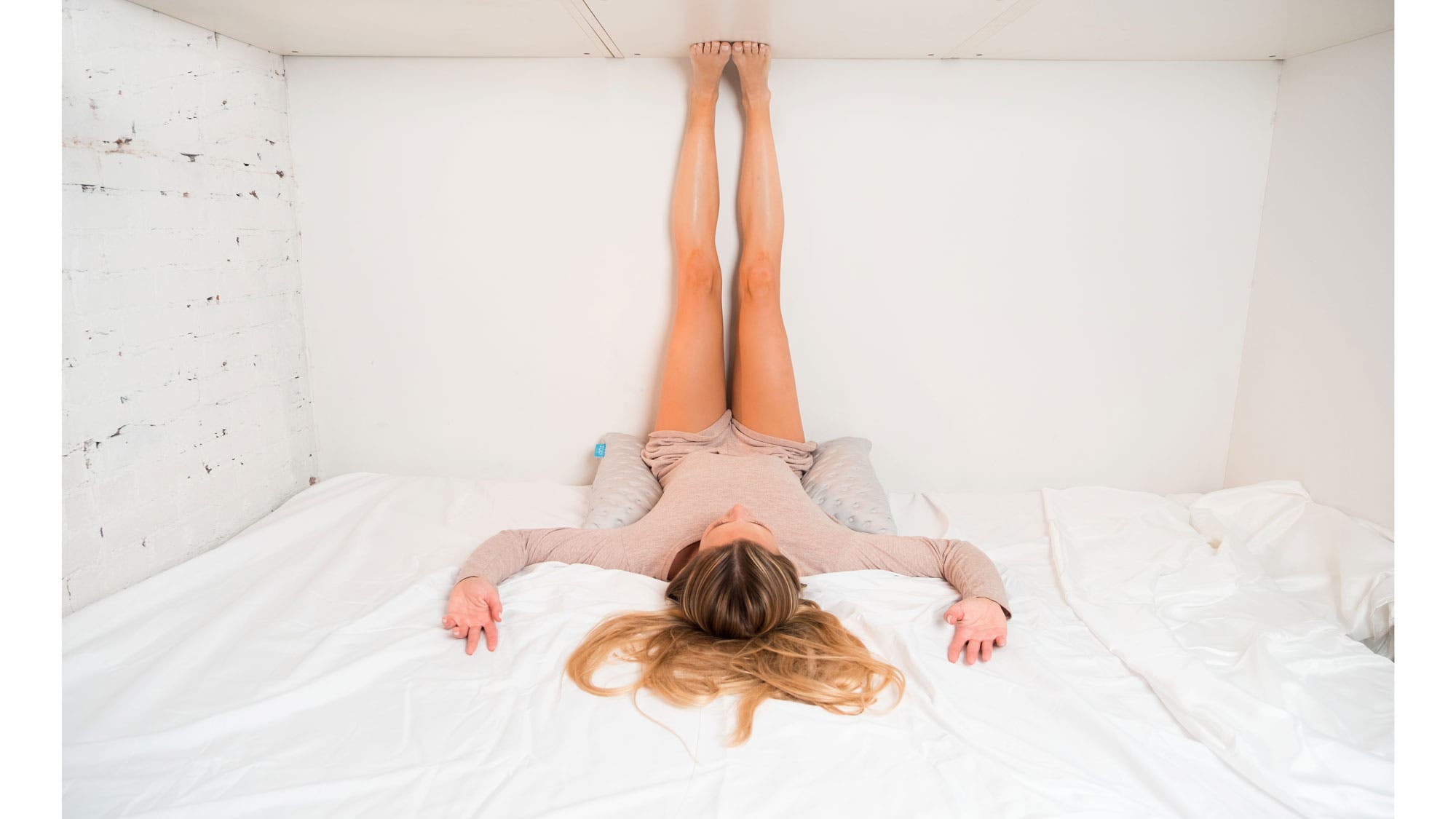
Viparita Karani (Legs-Up-The-Wall Pose)
Why this yoga pose helps prevent migraines: This pose is known to be helpful for a range of ailments, including high and low blood pressure, depression, anxiety, headaches, and migraines.
How to: You may want to fold one or two blankets and put them under your lower back for added support in this pose. If you’re stiff, the support should be lower and placed farther from the wall; if you’re more flexible, use a higher support that is closer to the wall. You also may need to adjust your distance from the wall based on your height—if you’re shorter, move closer to the wall; if you’re taller, move farther away.
Start with your support about 5 to 6 inches away from the wall. Sit sideways on the right or left end of the support—whatever side feels more comfortable—with your side against the wall . Exhale and swing your legs up onto the wall while bringing your shoulders and head lightly down onto the floor. Your buttocks don’t need to be pressed up against the wall, but they should fit in between the support and the wall.
Lift and release the base of your skull away from the back of your neck, soften your throat, and keep your chin in a natural position. Open your shoulder blades away from the spine and release your hands and arms out to your sides, palms up. Keep your legs relatively firm, just enough to hold them vertically in place. Stay in the pose for 5–15 minutes.
RELATED: Ask a Gear Guru: How do I Build the Perfect Recovery Room?